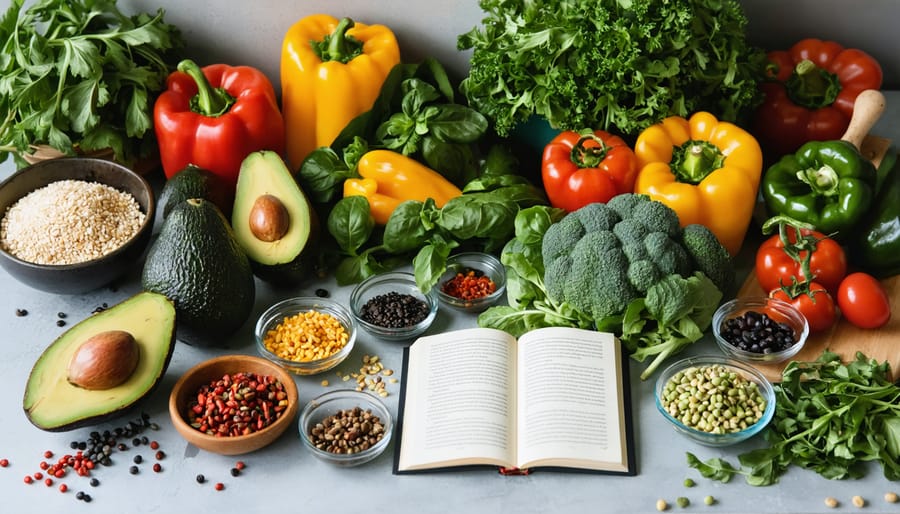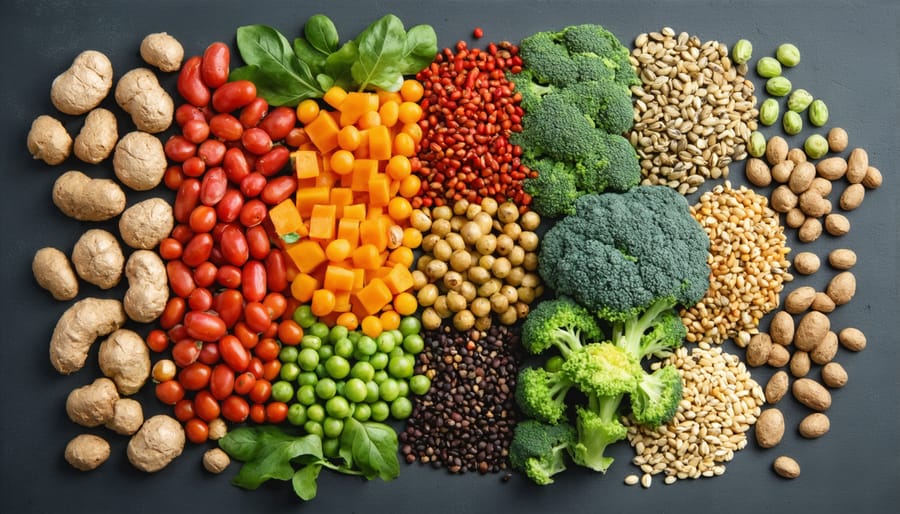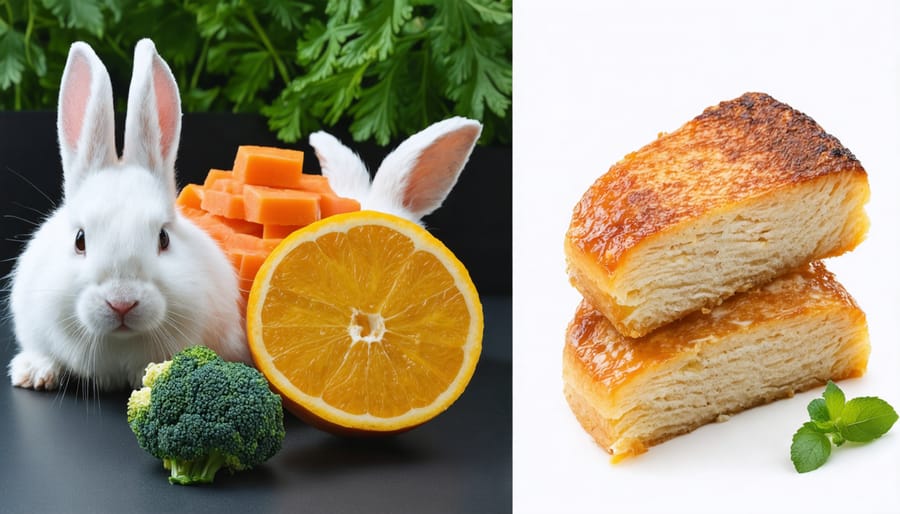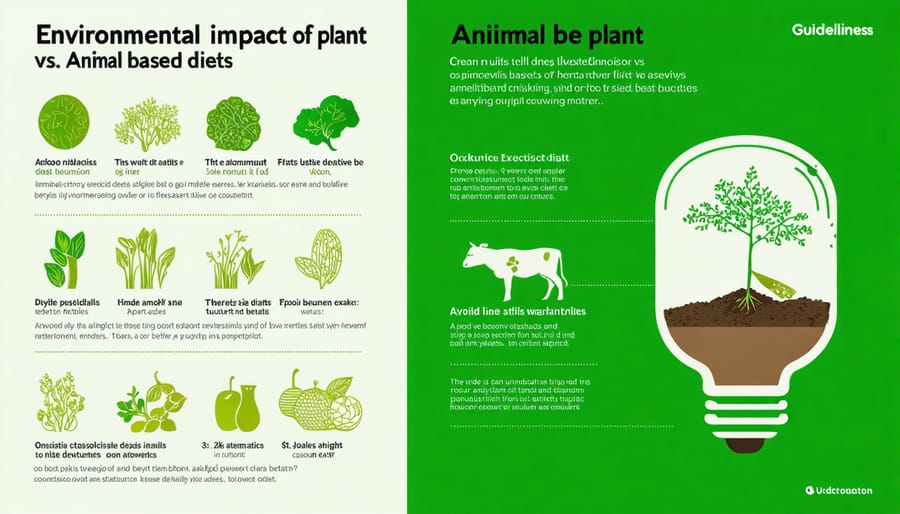
Embracing veganism isn’t just about changing your diet—it’s about discovering a more compassionate, sustainable way of living that benefits your health, the environment, and animals alike. Whether you’re driven by ethical concerns, health benefits, or environmental impact, transitioning to a vegan lifestyle represents a powerful choice that’s becoming increasingly mainstream in our modern world.
Think of veganism as a journey rather than a destination. It’s about making conscious choices that align with your values, starting with simple swaps like replacing dairy milk with plant-based alternatives or exploring the vibrant world of meat-free cooking. Each small step contributes to a larger positive impact, and you’ll find yourself part of a growing community that’s reshaping how we think about food and consumption.
The beauty of starting your vegan journey today lies in its accessibility. With an abundance of plant-based options in grocery stores, restaurants embracing vegan menus, and countless online resources offering support and recipes, there’s never been a better time to explore this lifestyle. From protein-packed legumes and grains to creative meat alternatives and dairy-free desserts, the vegan world offers endless possibilities for delicious, nutritious eating.
This guide will walk you through the fundamentals of veganism, addressing common concerns about nutrition, social situations, and practical tips for making the transition smooth and enjoyable. Remember, every vegan journey is unique, and there’s no “right” way to begin—what matters is taking that first step toward a more conscious way of living.
What Does Being Vegan Really Mean?
Beyond Just Food Choices
Embracing veganism extends far beyond what’s on your plate. When I first started my vegan journey, I was amazed to discover how many everyday items contained animal products. From leather shoes and wool sweaters to beeswax-based lip balms and silk scarves, animal derivatives are surprisingly prevalent in our daily lives.
The good news is that there are now countless cruelty-free alternatives available. I’ve found wonderful vegan leather bags made from cork and pineapple fibers, and my favorite winter coat is made from recycled plastic bottles instead of down feathers. Beauty products have evolved too, with brands offering everything from carmine-free lipsticks to lanolin-free moisturizers.
Even household items deserve a closer look. Many cleaning products are tested on animals, but certified cruelty-free options are readily available. When shopping, look for trusted certifications like the Leaping Bunny logo or PETA’s cruelty-free symbol. Remember, transitioning to a fully vegan lifestyle is a journey – start with small changes and gradually build from there. Every mindful choice makes a difference!
The Different Types of Plant-Based Diets
The beauty of plant-based eating lies in its flexibility – there’s no one-size-fits-all approach! Let me walk you through the most common types I’ve encountered in my journey. Raw veganism focuses on uncooked fruits, vegetables, nuts, and seeds, while whole-food plant-based (WFPB) emphasizes minimally processed ingredients and steers clear of oils. Some folks prefer to ease in gradually with a flexitarian approach, incorporating more plant-based meals while occasionally including animal products.
I’ve found that many people start with transitional vegetarianism, first eliminating meat while keeping dairy and eggs, before moving to a fully vegan diet. There’s also the increasingly popular high-carb low-fat vegan style, which emphasizes fruits, grains, and legumes. And don’t forget about junk food vegans (yes, that’s a thing!) who embrace plant-based versions of their favorite comfort foods.
Remember, your journey is unique! It’s perfectly okay to experiment with different approaches until you find what feels right for your body, lifestyle, and values. The key is choosing a sustainable path that brings you joy and aligns with your goals.
Starting Your Vegan Journey

Stocking Your Vegan Kitchen
Building a well-stocked vegan kitchen is like creating your own culinary adventure playground! Start with versatile protein sources like lentils, chickpeas, and various beans – they’re not just nutritious but incredibly budget-friendly. Keep quinoa, brown rice, and whole grain pasta as your go-to base ingredients for countless delicious meals.
Your pantry should include nutritional yeast (affectionately known as “nooch” in the vegan community) for that delightfully cheesy flavor, along with plenty of nuts and seeds. These are perfect for snacking and making creamy sauces. Don’t forget to stock up on plant-based milk alternatives – I always keep almond milk for plant-based breakfast options and coconut milk for rich curries.
Fresh produce is your best friend! Keep a variety of seasonal fruits and vegetables, and remember that frozen options are just as nutritious and often more convenient. Essential condiments include tamari or soy sauce, maple syrup, apple cider vinegar, and tahini – these will help you create everything from simple dressings to complex sauce bases.
For baking and cooking, stock up on ground flaxseed (great egg replacer!), coconut oil, and plant-based butter. Having these basics on hand means you’ll always be ready to whip up something delicious, whether it’s a quick weeknight dinner or a fancy weekend feast!
Simple Swap-Outs
Making the switch to vegan alternatives is easier than you might think! Let’s explore some simple nutritious food substitutions that’ll help you maintain your favorite recipes while embracing a plant-based lifestyle.
For baking enthusiasts, swap eggs with mashed bananas or ground flaxseed mixed with water (1 tablespoon flax + 3 tablespoons water equals one egg). Love your morning latte? Try oat milk – it’s creamy, froths beautifully, and has become my personal favorite after trying countless alternatives.
Butter can be replaced with coconut oil or plant-based spreads in most recipes. For cheese lovers, nutritional yeast adds that coveted savory flavor to dishes, while cashew-based cheese alternatives melt wonderfully on pizza. When it comes to meat, lentils and mushrooms make excellent substitutes in traditional recipes – they’re packed with umami flavor and provide satisfying texture.
Here’s a quick tip I learned from experience: start with dishes you already love and make small changes. Love spaghetti bolognese? Try it with crumbled tempeh or textured vegetable protein instead of ground meat. Pancakes can easily be made vegan by using plant milk and a banana as a binder.
Remember, these swaps aren’t about restriction – they’re about discovering new flavors and textures while staying true to the meals you enjoy.

Navigating Social Situations
Navigating social situations as a new vegan doesn’t have to be stressful! With a little preparation and confidence, you can enjoy dining out and social gatherings while staying true to your values. When eating at restaurants, take a moment to review the menu online beforehand – most establishments now offer plant-based options or can modify existing dishes. Don’t hesitate to call ahead and ask about vegan alternatives; many chefs appreciate the heads-up and will gladly accommodate your needs. Following basic dining out etiquette while making your dietary preferences known will ensure a smooth experience.
For social gatherings, offer to bring a delicious vegan dish to share – it’s a great way to show others how flavorful plant-based food can be! I’ve found that bringing my famous chickpea chocolate chip cookies to parties has converted many skeptics into plant-based dessert enthusiasts. When attending dinner parties, communicate your dietary needs to the host in advance, and always offer to contribute a dish or help with the menu planning.
Remember, you’re not being difficult by staying true to your choices. Most friends and family will be understanding and supportive once they see how important this lifestyle is to you. Stay positive, focus on what you can eat rather than what you can’t, and use these occasions as opportunities to share your journey with others in a gentle, non-pushy way.
The Benefits of Going Vegan
Health and Wellness Impact
Embracing a vegan lifestyle isn’t just about making ethical choices – it can also bring remarkable benefits to your overall health and well-being. As someone who’s experienced this transformation firsthand, I’ve witnessed how this plant-based journey can revolutionize your relationship with food through mindful eating practices and conscious nutrition.
Research consistently shows that well-planned vegan diets are associated with lower risks of heart disease, certain cancers, and type 2 diabetes. Many of my readers report experiencing increased energy levels, better digestion, and clearer skin within weeks of transitioning. The abundance of fiber, antioxidants, and plant-based nutrients in a vegan diet supports optimal gut health and strengthens your immune system.
One of the most significant advantages I’ve observed is how a vegan diet naturally encourages weight management. Plant-based foods are typically lower in calories while being nutrient-dense, helping you feel satisfied and energized throughout the day. Plus, the high fiber content aids in maintaining stable blood sugar levels and reducing unnecessary snacking.
It’s worth noting that proper planning is key to ensuring you’re meeting all your nutritional needs. Focus on incorporating diverse protein sources like legumes, nuts, and whole grains, and consider supplementing with vitamin B12, which isn’t naturally found in plant foods. Many women in our community have found that working with a registered dietitian during their transition helped them create balanced meal plans that support their unique needs and lifestyle goals.
Remember, everyone’s body responds differently to dietary changes, so listen to your body and adjust accordingly. The key is to approach this journey with patience and curiosity, celebrating the positive changes while being mindful of your individual needs.

Environmental Connection
One of the most compelling reasons to consider veganism is its significant positive impact on our environment. When I first learned about the environmental benefits of a plant-based diet, I was honestly amazed at how one lifestyle choice could make such a difference.
Did you know that animal agriculture is responsible for a substantial portion of global greenhouse gas emissions? By choosing plant-based foods, we can reduce our carbon footprint dramatically. To put this in perspective, switching to a vegan diet can cut your food-related carbon emissions by up to 73%!
Water conservation is another crucial environmental benefit. Growing plants for food typically requires far less water than raising animals for meat and dairy. For example, producing just one pound of beef can use up to 1,800 gallons of water, while the same amount of vegetables requires only a fraction of that.
The impact on deforestation is equally significant. Large areas of forest, particularly in regions like the Amazon, are cleared to create grazing land for cattle and to grow crops to feed livestock. By choosing plant-based options, we’re indirectly helping to preserve these vital ecosystems.
What I love most about the environmental aspect of veganism is that it’s something tangible we can do every day to help our planet. Each meal becomes an opportunity to make a positive impact. While it might feel like a small change, when combined with the actions of others in our growing community, it creates a powerful ripple effect for environmental sustainability.
Remember, every small step counts, and even incorporating more plant-based meals into your week can make a meaningful difference for our planet’s future.
Embarking on a vegan journey is an exciting and transformative experience that’s unique to each person. Remember, there’s no need to make the switch overnight – taking small, manageable steps can lead to lasting changes. Start by incorporating one or two plant-based meals into your weekly routine, experiment with new ingredients, and gradually expand your vegan recipe collection.
Join local vegan communities, either in person or through social media platforms, where you’ll find support, recipe ideas, and valuable tips from those who’ve walked this path before. When I first started, connecting with other vegans helped me discover fantastic food alternatives and navigate common challenges with confidence.
Keep in mind that everyone’s journey is different, and it’s perfectly okay to progress at your own pace. Focus on the positive impact you’re making – for your health, the environment, and animal welfare – rather than striving for perfection. If you slip up occasionally, be kind to yourself and keep moving forward.
Consider starting with simple swaps like plant-based milk in your coffee or trying meat alternatives in familiar recipes. Explore local restaurants with vegan options, stock your pantry with essential ingredients, and most importantly, stay curious and open-minded about the possibilities ahead.
You’re not just adopting a new diet; you’re embracing a compassionate lifestyle that aligns with your values. Take that first step today – your future self will thank you.



